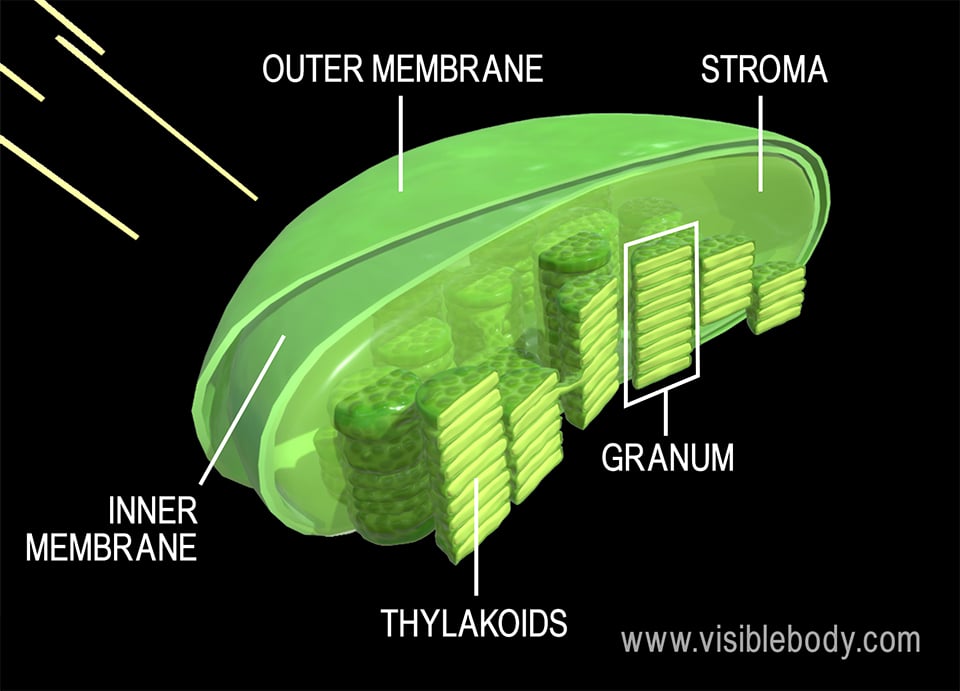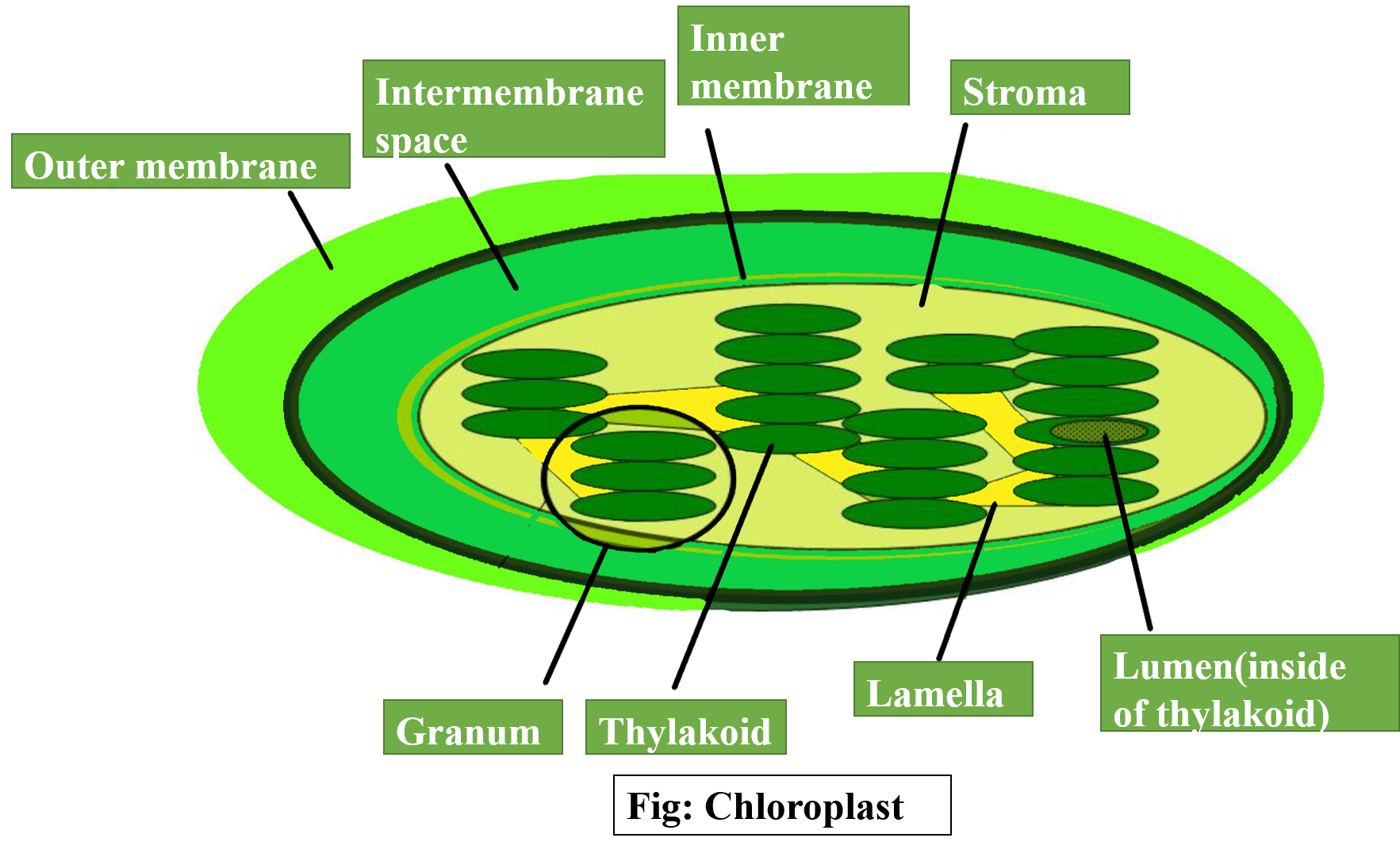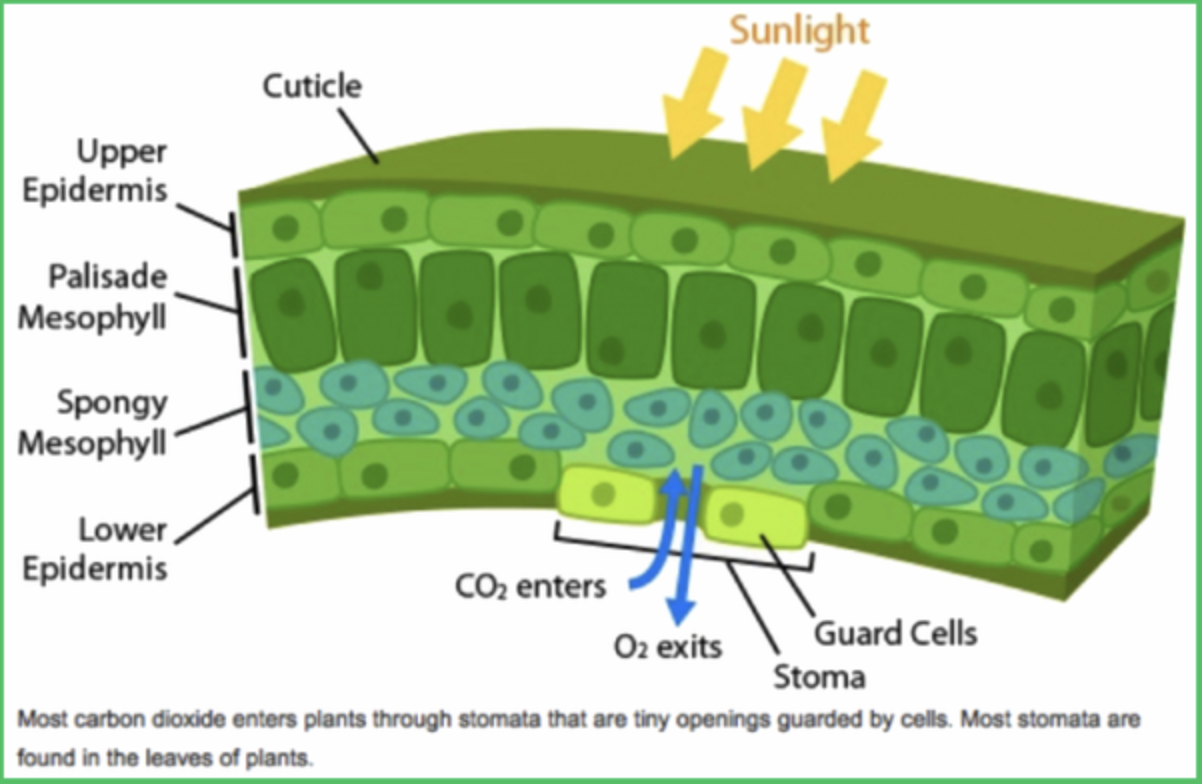Does photsynthesis occur in the stroma – Does photosynthesis occur in the stroma? This question delves into the heart of plant biology, exploring the intricate dance of light, energy, and carbon within the chloroplast. The stroma, a fluid-filled region within the chloroplast, plays a crucial role in the process of photosynthesis, specifically in the Calvin cycle, the second stage of this vital energy conversion. Let’s unravel the fascinating world of the stroma and its contribution to the production of sugars, the fuel that powers life on Earth.
The chloroplast, the green organelle found in plant cells, is the site of photosynthesis. It is divided into two main compartments: the thylakoid membrane system and the stroma. The thylakoid membranes, arranged in stacks called grana, are the location of the light-dependent reactions, where light energy is captured and converted into chemical energy in the form of ATP and NADPH.
These energy carriers then move to the stroma, where they power the Calvin cycle.
Photosynthesis
Photosynthesis is the process by which plants, algae, and some bacteria convert light energy into chemical energy in the form of glucose. This process is essential for life on Earth, as it provides the foundation for most food chains. Photosynthesis takes place in chloroplasts, which are organelles found in plant cells. Chloroplasts contain chlorophyll, a green pigment that absorbs light energy.
The Two Stages of Photosynthesis
Photosynthesis is a complex process that can be divided into two main stages: the light-dependent reactions and the Calvin cycle. These stages are interconnected, with the products of the light-dependent reactions providing the energy and reducing power needed for the Calvin cycle.
Light-Dependent Reactions
The light-dependent reactions occur in the thylakoid membranes of chloroplasts. These reactions are driven by light energy, which is absorbed by chlorophyll. The energy from light is used to split water molecules, releasing electrons, hydrogen ions (H+), and oxygen gas. The electrons are passed along an electron transport chain, releasing energy that is used to pump H+ ions into the thylakoid lumen.
This creates a proton gradient, which is used to generate ATP (adenosine triphosphate), the energy currency of cells. The electrons are then used to reduce NADP+ (nicotinamide adenine dinucleotide phosphate) to NADPH, which is a reducing agent.
The light-dependent reactions can be summarized as follows:
Light energy + H 2O + NADP + + ADP + P i → O 2 + NADPH + ATP
Calvin Cycle
The Calvin cycle occurs in the stroma of chloroplasts, the fluid-filled space outside the thylakoids. This cycle uses the ATP and NADPH produced in the light-dependent reactions to convert carbon dioxide (CO 2) into glucose. The Calvin cycle is a complex series of reactions that can be divided into three main phases: carbon fixation, reduction, and regeneration.
The Calvin cycle can be summarized as follows:
CO 2 + ATP + NADPH → Glucose + ADP + P i + NADP +
Comparison of the Two Stages
The following table summarizes the key differences between the light-dependent reactions and the Calvin cycle:
| Feature | Light-Dependent Reactions | Calvin Cycle |
|---|---|---|
| Location | Thylakoid membranes | Stroma |
| Energy Source | Light energy | ATP and NADPH |
| Products | ATP, NADPH, O2 | Glucose |
The Stroma
The stroma is a semi-fluid, colorless matrix that fills the space between the thylakoid membranes in chloroplasts. It’s a bustling hub of activity, playing a crucial role in the second stage of photosynthesis: the Calvin cycle.
The Structure and Function of the Stroma
The stroma is a complex and dynamic environment, containing a variety of enzymes, molecules, and structures essential for the Calvin cycle. It is enclosed by a double membrane called the chloroplast envelope, which regulates the movement of substances in and out of the stroma. The stroma’s semi-fluid nature allows for the movement of enzymes and molecules, facilitating the biochemical reactions of the Calvin cycle.
Key Molecules in the Stroma and Their Roles in the Calvin Cycle
The stroma is rich in various molecules that play key roles in the Calvin cycle. These include:
- Ribulose bisphosphate carboxylase/oxygenase (RuBisCo): This enzyme catalyzes the first step of the Calvin cycle, the fixation of carbon dioxide into an organic molecule.
- NADPH: This electron carrier, produced during the light-dependent reactions, provides the reducing power needed to convert carbon dioxide into sugar.
- ATP: This energy currency molecule, also generated during the light-dependent reactions, provides the energy required for the Calvin cycle reactions.
- Sugars: The Calvin cycle produces simple sugars, such as glucose, which are the primary products of photosynthesis and serve as energy sources for the plant.
- Enzymes: The stroma contains a variety of enzymes that catalyze the different steps of the Calvin cycle.
How the Stroma Provides a Suitable Environment for the Calvin Cycle
The stroma provides a suitable environment for the Calvin cycle to occur due to its unique properties:
- High Concentration of Enzymes: The stroma contains a high concentration of enzymes, including RuBisCo, that catalyze the reactions of the Calvin cycle. This ensures that the reactions occur efficiently and at a rapid pace.
- Presence of NADPH and ATP: The stroma receives NADPH and ATP from the light-dependent reactions, providing the necessary reducing power and energy for the Calvin cycle.
- Semi-fluid Nature: The semi-fluid nature of the stroma allows for the movement of enzymes and molecules, facilitating the biochemical reactions of the Calvin cycle.
- pH Buffering: The stroma maintains a specific pH, which is crucial for the optimal functioning of the enzymes involved in the Calvin cycle.
The Calvin Cycle

The Calvin cycle, also known as the Calvin-Benson cycle, is the light-independent stage of photosynthesis. It occurs in the stroma of chloroplasts and utilizes the energy stored in ATP and NADPH produced during the light-dependent reactions to convert carbon dioxide into glucose. This cycle is a complex series of biochemical reactions that can be divided into three main stages: carbon fixation, reduction, and regeneration.
Carbon Fixation
Carbon fixation is the process by which carbon dioxide from the atmosphere is incorporated into an organic molecule. In the Calvin cycle, this process is catalyzed by the enzyme RuBisCO (ribulose-1,5-bisphosphate carboxylase/oxygenase). RuBisCO combines carbon dioxide with a five-carbon sugar called ribulose-1,5-bisphosphate (RuBP), resulting in an unstable six-carbon intermediate. This intermediate quickly breaks down into two molecules of 3-phosphoglycerate (3-PGA), a three-carbon compound.
Reduction
The reduction stage involves the conversion of 3-PGA into glyceraldehyde-3-phosphate (G3P), a three-carbon sugar. This process requires energy from ATP and reducing power from NADPH, both produced during the light-dependent reactions. The energy from ATP is used to phosphorylate 3-PGA, forming 1,3-bisphosphoglycerate. NADPH then donates electrons to 1,3-bisphosphoglycerate, reducing it to G3P.
Regeneration
The final stage of the Calvin cycle involves the regeneration of RuBP, the starting molecule for the cycle. This process requires energy from ATP and involves a series of complex reactions that rearrange carbon atoms from G3P molecules to form RuBP. The regeneration of RuBP ensures that the cycle can continue.
Key Enzymes in the Calvin Cycle
- RuBisCO: Catalyzes the initial carbon fixation reaction, combining carbon dioxide with RuBP.
- Phosphoglycerate kinase: Catalyzes the phosphorylation of 3-PGA to 1,3-bisphosphoglycerate.
- Glyceraldehyde-3-phosphate dehydrogenase: Catalyzes the reduction of 1,3-bisphosphoglycerate to G3P.
- Triose phosphate isomerase: Catalyzes the interconversion of G3P and dihydroxyacetone phosphate (DHAP).
- Aldolase: Catalyzes the condensation of DHAP and G3P to form fructose-1,6-bisphosphate.
- Fructose bisphosphatase: Catalyzes the dephosphorylation of fructose-1,6-bisphosphate to fructose-6-phosphate.
- Transketolase: Catalyzes the transfer of a two-carbon unit from a ketose to an aldose.
- Sedoheptulose bisphosphatase: Catalyzes the dephosphorylation of sedoheptulose-1,7-bisphosphate to sedoheptulose-7-phosphate.
- Ribulose-5-phosphate epimerase: Catalyzes the conversion of xylulose-5-phosphate to ribulose-5-phosphate.
- Ribulose phosphate kinase: Catalyzes the phosphorylation of ribulose-5-phosphate to RuBP.
The Importance of the Stroma in Photosynthesis: Does Photsynthesis Occur In The Stroma

The stroma, the fluid-filled region within the chloroplast, plays a crucial role in photosynthesis, serving as the site for the Calvin cycle, the light-independent reactions. Its unique location and structure facilitate efficient energy transfer and molecule exchange between the light-dependent reactions and the Calvin cycle, while its composition and pH create an environment optimal for the enzymes involved in carbon fixation.
The Stroma’s Location and Structure Facilitate Efficient Energy Transfer and Molecule Exchange
The stroma’s location within the chloroplast, surrounding the thylakoid membranes where the light-dependent reactions occur, allows for a seamless flow of energy and molecules between the two processes. The thylakoid membranes, stacked into grana, generate ATP and NADPH, essential for the Calvin cycle. These energy carriers, along with carbon dioxide, readily diffuse into the stroma, where they are utilized by the enzymes involved in carbon fixation.
The stroma’s fluid nature further facilitates the movement of these molecules, ensuring a constant supply of energy and reactants for the Calvin cycle.
The Stroma’s Composition and pH Influence the Activity of Enzymes Involved in the Calvin Cycle
The stroma contains a high concentration of enzymes, including Rubisco, which catalyzes the initial step of carbon fixation in the Calvin cycle. These enzymes are specifically adapted to function optimally in the stroma’s unique environment. The stroma’s pH, maintained at a slightly alkaline level, is ideal for the activity of these enzymes. Additionally, the stroma contains a high concentration of inorganic ions, such as magnesium, which are essential cofactors for many enzymes involved in the Calvin cycle.
This optimal environment ensures efficient and effective carbon fixation, leading to the production of glucose, the primary product of photosynthesis.
Key Factors Making the Stroma Essential for Photosynthesis, Does photsynthesis occur in the stroma
| Factor | Description |
|---|---|
| Location | Surrounds the thylakoid membranes, allowing for efficient transfer of energy and molecules from the light-dependent reactions to the Calvin cycle. |
| Structure | Fluid nature facilitates the movement of molecules and enzymes, ensuring a constant supply of reactants and energy for the Calvin cycle. |
| Composition | High concentration of enzymes, including Rubisco, essential for carbon fixation. Contains inorganic ions, such as magnesium, which act as cofactors for many enzymes involved in the Calvin cycle. |
| pH | Slightly alkaline pH, optimal for the activity of enzymes involved in carbon fixation. |
Examples of Photosynthesis in Different Organisms

Photosynthesis is a vital process that sustains life on Earth. It is the process by which organisms convert light energy into chemical energy, primarily in the form of glucose. While plants are the most well-known photosynthetic organisms, photosynthesis is also carried out by a wide range of other organisms, including algae and bacteria.These organisms vary in their photosynthetic structures and processes, reflecting adaptations to diverse environments.
Exploring these differences provides a deeper understanding of the versatility and importance of photosynthesis in the biosphere.
Photosynthesis in Plants
Plants are the most familiar examples of photosynthetic organisms. They possess specialized organelles called chloroplasts, which are responsible for carrying out photosynthesis. Chloroplasts contain chlorophyll, a green pigment that absorbs light energy, and other essential components for the light-dependent and light-independent reactions.
- Chloroplasts: These organelles are enclosed by two membranes and contain a third membrane system called thylakoids, which are stacked into structures called grana. The space between the thylakoids and the inner membrane is called the stroma, where the Calvin cycle takes place.
- Chlorophyll: This pigment absorbs light energy, particularly in the red and blue regions of the spectrum. Chlorophyll is located within the thylakoid membranes.
- Light-dependent reactions: These reactions occur within the thylakoid membranes and involve the capture of light energy to produce ATP and NADPH, which are used in the Calvin cycle.
- Light-independent reactions (Calvin cycle): These reactions occur in the stroma and use the energy from ATP and NADPH to convert carbon dioxide into glucose.
Photosynthesis in Algae
Algae are a diverse group of photosynthetic organisms that include unicellular and multicellular forms. They are found in a wide range of aquatic and terrestrial habitats. Unlike plants, algae lack true roots, stems, and leaves. However, they possess chloroplasts similar to those found in plants, containing chlorophyll and other photosynthetic pigments.
- Chloroplasts: Algae chloroplasts vary in shape and size, but they generally have a similar structure to plant chloroplasts, with thylakoid membranes and stroma.
- Pigments: In addition to chlorophyll, algae contain other pigments, such as carotenoids and phycobilins, which allow them to absorb light energy in different wavelengths.
- Photosynthetic pathways: Algae have a wide range of photosynthetic pathways, including C3, C4, and CAM photosynthesis, which are adaptations to different environmental conditions.
Photosynthesis in Bacteria
Photosynthetic bacteria, also known as cyanobacteria, are prokaryotic organisms that carry out photosynthesis without chloroplasts. They possess specialized membrane systems that contain chlorophyll and other photosynthetic pigments.
- Photosynthetic membranes: Cyanobacteria have internal membrane systems called thylakoids, which are similar to those found in plant and algal chloroplasts. These membranes contain chlorophyll and other photosynthetic pigments.
- Pigments: Cyanobacteria contain chlorophyll a, which is also found in plants and algae, as well as other pigments, such as phycocyanin and phycoerythrin, which give them their characteristic blue-green color.
- Photosynthetic pathways: Cyanobacteria use a variety of photosynthetic pathways, including oxygenic photosynthesis, which releases oxygen as a byproduct, and anoxygenic photosynthesis, which does not produce oxygen.
Structural Differences in Chloroplasts
Chloroplasts in different photosynthetic organisms exhibit structural variations reflecting their evolutionary history and adaptations to different environments. While the basic structure of chloroplasts is similar across plants, algae, and cyanobacteria, there are some notable differences.
Plant Chloroplasts: These chloroplasts are typically lens-shaped or ovoid and are enclosed by two membranes. They contain a system of internal membranes called thylakoids, which are stacked into grana. The space between the thylakoids and the inner membrane is called the stroma, where the Calvin cycle takes place. Plant chloroplasts also contain starch granules, which store excess glucose produced during photosynthesis.
Algal Chloroplasts: Algal chloroplasts vary in shape and size depending on the species. They can be cup-shaped, spiral, or ribbon-like. Algal chloroplasts generally have a similar structure to plant chloroplasts, with thylakoids and stroma. However, they may contain different pigments and have different arrangements of thylakoids.
Cyanobacterial Chloroplasts: Cyanobacteria do not have chloroplasts in the same way that plants and algae do. Instead, they have specialized membrane systems called thylakoids, which are located within the cytoplasm. These thylakoids contain chlorophyll and other photosynthetic pigments and are responsible for carrying out photosynthesis.
The stroma, with its unique environment and key enzymes, is a critical component of photosynthesis. It’s where the Calvin cycle, a complex series of reactions, takes place, ultimately producing glucose, the energy source for plants and, by extension, the food chain. Understanding the role of the stroma sheds light on the intricate mechanisms that sustain life on our planet.
FAQ Guide
What is the main function of the stroma in photosynthesis?
The stroma is the site of the Calvin cycle, where carbon dioxide is converted into glucose using the energy from ATP and NADPH produced in the light-dependent reactions.
What are some key enzymes found in the stroma?
The stroma contains crucial enzymes for the Calvin cycle, including Rubisco, which fixes carbon dioxide, and others that catalyze the reduction and regeneration of carbon compounds.
How does the stroma’s pH affect the Calvin cycle?
The stroma’s pH is slightly alkaline, which optimizes the activity of enzymes involved in the Calvin cycle.
Why is the stroma important for the efficient transfer of energy and molecules?
The stroma provides a direct pathway for the movement of ATP and NADPH from the thylakoid membranes to the Calvin cycle enzymes, facilitating the smooth flow of energy and reducing power.






